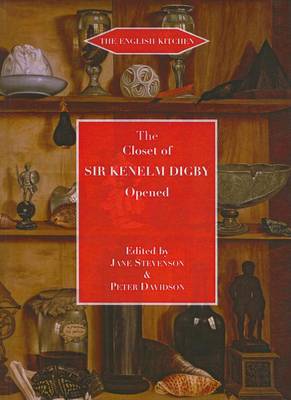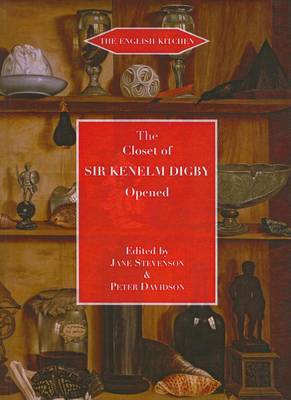
- Afhalen na 1 uur in een winkel met voorraad
- Gratis thuislevering in België vanaf € 30
- Ruim aanbod met 7 miljoen producten
- Afhalen na 1 uur in een winkel met voorraad
- Gratis thuislevering in België vanaf € 30
- Ruim aanbod met 7 miljoen producten
Omschrijving
This is a paperback edition of a classic of 17th-century English writing about food and drink. There is perhaps none that is more frequently quoted than this, no title more familiar, although the complete title, The closet of the eminently learned Sir Kenelm Digbie Kt. opened: Whereby is discovered several ways for making of metheglin, sider, cherry-wine &c. together with excellent directions for cookery: as also for preserving, conserving, candying, &c. may be somewhat tricky to remember. Digby was also a European figure of some renown in scientific, philosophical and mathematical circles (besides being a military man, a pirate and a womaniser) who, among other accomplishments is credited with inventing the modern wine bottle. This recipe collection made by him (in line with similar collections made by male enthusiasts and intellectuals of the time, for example the diarist John Evelyn) was published after his death by his former assistant George Hartman and supposedly authorized by his son. It is perhaps the most literate of such cookery books. Digby was a natural writer, as entertaining as instructive. Many of the recipes are for drinks, particularly of meads or metheglins, but the culinary material provides a remarkable conspectus of accepted practice among court circles in Restoration England, with extra details supplied from Digby's European travels. The editors also include the inventory of Digby's own kitchen in his London house, discovered amongst papers now deposited in the British Library; and they have provided a few modern interpretations of Digby's recipes. The work was last printed in 1910, in an edition that is no longer easily available. This new version has several improvements. The editors discuss the role of George Hartman in the compilation of the book, and compare its contents to another work that went out in 1682 over Hartman's own name, The True Preserver and Restorer of Health. There is a full glossary and the reader will be helped by the extensive biographical notes about people named in the text as the source of recipes.
Specificaties
Betrokkenen
- Uitgeverij:
Inhoud
- Aantal bladzijden:
- 368
- Taal:
- Engels
- Reeks:
Eigenschappen
- Productcode (EAN):
- 9781903018705
- Verschijningsdatum:
- 4/10/2010
- Uitvoering:
- Paperback
- Formaat:
- Trade paperback (VS)
- Afmetingen:
- 137 mm x 185 mm
- Gewicht:
- 362 g

Alleen bij Standaard Boekhandel
+ 101 punten op je klantenkaart van Standaard Boekhandel
Beoordelingen
We publiceren alleen reviews die voldoen aan de voorwaarden voor reviews. Bekijk onze voorwaarden voor reviews.








